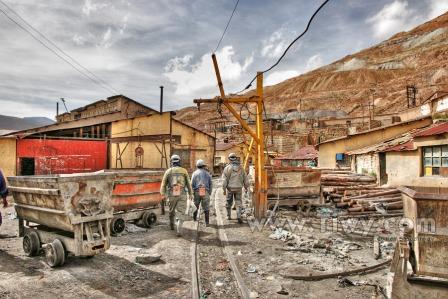|
Potosi Bolivia: Silver Mines and Salt Potosi Bolivia, the highest city in the world, is located at nearly 15,000 feet above sea level. It is the capital of the Department of Potosi, the third smallest Bolivian state. Once one of the wealthiest cities on Earth, during the 1600’s it is said to have also been the most populous city on Earth, and larger that most European capitals.
The Spanish arrived in the 1500’s having already heard of the vast wealth of silver being mined in Porco. The Quechua had conquered many of the other indigenous peoples of the region and enslaved them to work in the mines under a system known as the “mita” system. The Spanish settled the area in a chaotic, unplanned manner, enslaved the locals, and copied the Quechua’s mita labor system. They had no plans to reinvest in the area, although they did spent millions on homes, cathedrals and government buildings for themselves. Their only plan was to mine as much of the precious metal as possible and ship it back to the motherland, Spain. Thus, due to the phenomenal amounts of silver being extracted from mountains such as the Cerro Rico, Porco, and many others in the region, they eventually built the Casa de la Moneda (the Spanish Mint – they actually built two – you can read more about this on our page about the history of Potosi) where they converted the silver into coins. The current Casa de la Moneda, which thousands of tourists visit per year, cost about 10 million dollars, in todays terms, to build. Hundreds, possibly thousands of shiploads of silver were sent to Spain over the course of more than 300 years. At one point, there was so much silver that during a particular festival the cobblestones were removed from the city street and replaced with bars of silver. Stories of the city that paved its streets with silver reached Europe and motivated many more settlers to arrive. Potosi has gone from opulent to poverty stricken and today is one of the poorest regions of Bolivia. It is also the only Bolivian state in which more people live in rural areas than in urban areas. Even after Bolivia had gained its independence in 1825, the Cerro Rico and other mines continued to provide silver, tin, and other metals. During the II World War Bolivia experienced a tin “boom” as it shipped tin to more industrialized nations in Europe and the United States, which promptly went flat when the war ended. Tourists can now visit the Cerro Rico and other mines in the region. But the mines of Potosi are not the only attraction in the area. Potosi is also known for its great Salar de Uyuni, a salt desert so extensive and so level, its surface is used to calibrate satellites. These enormous salt flats, the largest in the world, were left behind after the evaporation of a large ocean-like saltwater lake that covered the altiplano (Andean highlands) all the way to Lake Titicaca. As this is one of Bolivia’s top tourist destinations, we’ve dedicated an entire section to the Salt Flats of Uyuni. The region is also known for its hot springs, geysers, volcanic craters, and mud baths. Toro Toro National Park and Eduardo Avaroa National Park are both home to hundreds of singular species of flora and fauna. If you’re lucky, you may arrive in time to view the arrival of thousands of pink flamingoes, the only flock of flamingoes known to live so high above sea level. In the surrounding areas, you can also visit other unique sites such as caves, waterfalls, rock paintings, dinosaur tracks, petroglyphs, and rock formations. Laguna Verde and Laguna Colorada, Isla Incahuasi, Isla Pescado, and others are all popular tourist attractions. The more adventurous can hike and climb numerous canyons, craters and mountains in the area as well. UNESCO named Potosi Cultural and Natural Heritage of Humanity and the Organization of American States named Potosi a Monument City of the Americas for its cultural and historic value. Potosi is arid, remote, and cold but its unique attractions and natural beauty make Potosi a hot destination! Use the links above and below to begin planning your trip to Potosi Bolivia!     |
